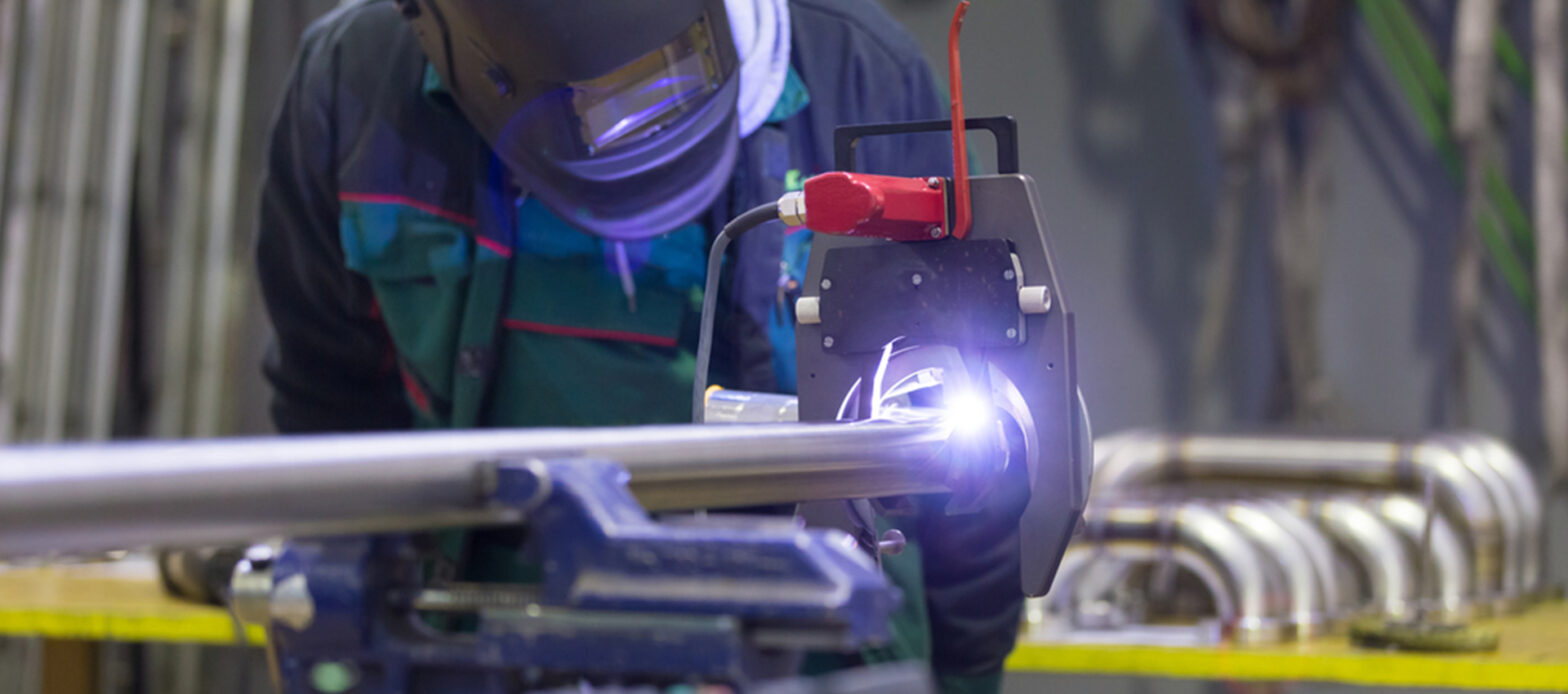As the name implies, an orbital weld is a technique where in the welding tool or electrode is rotated 360° around a static workpiece. This process creates a uniform weld around the tube or pipe which is difficult to achieve in manual welding.
Originally developed by the aerospace industry in the late 50s to address fuel and hydraulic fluid leakages, constant improvements in control systems and power supplies have popularised the use of orbital welding in many industrial applications. This type of welding falls under Tungsten Inert Gas (TIG) welding. Orbital welds can create high-quality repeatable welds using a computer, consequently minimizing the risk of human error. The process is used for two main applications: tube-to-tube / pipe-to-pipe joining and tube-to-tube-sheet joining.
Advantages of Orbital Welding:
- Increased Speed and Process Efficiency
- High Weld Quality and consistency
- Precise welding for small diameter pipes as well
- No carbon deposition inside pipes after welding
- Weld Repeatability
- Weld Cleanliness
- Versatility for Unique Applications - such as a piece is unable to be rotated, that has poor visibility, or is in a hard-to-reach area
- Improved Safety by removing welders from the workspace.
Limitations of Orbital Welding:
- Limited application: Not all objects can be welded orbitally.
- Different welding heads are required for different objects.
- High initial capital cost than conventional welding.
Parts of an orbital welding system:
- Programmable Power Supply: The power supply allows the user to program a range of controls like current intensity, pulse rate, the flow of shielding gas, the welding head travel speed, and wire feed options. It is recommended that the power source should be portable, light, compact, and capable of controlling at least four axes.
- Orbital Welding Heads: The size of the weld head varies with application but should have the same properties like maintaining the position of the electrodes, controlling the welding current, maintaining an optimal temperature, and applying pressure to the workpieces.
- Wire Feeder: The wire feeder, when required, can be welded into the head of the device or part of a separate system
- Water/Air Coolant System: The coolant system can be either air or water and it prevents the inner system from overheating during the welding and protects the welding operator from the process heat input.
- Inert Gas Cylinder: Inert gas with a flex pipe is required to purge the hollow pipes during welding. The most common inert gas used in orbital welding is Argon, whereas Nitrogen and helium are also used as per the composition of welding material.
Orbital welding can be performed on a variety of metals including high-strength, high-temperature, and corrosion-resistant steels, unalloyed and low-alloyed carbon steels, nickel alloys, copper, titanium, aluminum, chrome plated (CP) and its associated alloys.
Since orbital welding is performed in an inert atmosphere, the results are very clean with low particle counts and no unwanted spatter.
Steps of Orbital Welding Process:
- Cut: To get the pipe or tube ready for weld, they first need to be cut. This is done using orbital saws which rotate around the workpiece to create a clean and even cut.
- Bevel/Face: The next step is getting rid of imperfections or burrs after cutting. This step is very important to create a clean and good weld. Burrs create a gap that can lead to bacterial contamination in the future. For Tubes or thin-walled pipes, a facing tool is used whereas in the case of heavy-walled pipes a portable pipe bevelling tool is used.
- Clean: Cleaning the tubes or pipes is essential to create a good weld and remove potential contaminants.
- Tungsten: Tungsten electrodes are needed to strike an arc. The wall thickness and outside diameter of the pipe or tube determine the length and size of the electrode.
- Align: Proper alignment of the two ends of the workpiece is extremely important to create a good weld. The job pieces need to be clamped together either by placing them inside the weld held (fusion welding) or tacked together with a clamping device (wire filler welding).
- Purge: The next step after alignment is the purging of oxygen from inside the tube or pipe. Inert gas (Argon, Nitrogen or helium) passes from one end to another end (between two welding pipes), this prevents carbon deposition during the welding process inside pipes. This is the most critical part of orbital welding for specialty gas pipes. Mainly where ultra-high purity gases pass through these pipes for application. And also, prevents any discoloration or imperfections and prevents the weld from sinking.
- Program: The operator needs to adjust the power supply to develop the welding program by controlling the welding speed, current intensity, and welding levels. However, modern power supplies come equipped with auto-programming where parameters like weld head, job material, outer diameter, and wall thickness are fed into the system to create a pre-developed weld program.
- Weld: After completion of all the previous steps, the arc is ready to strike by rotating the tungsten electrode 360° around the workpiece to create a uniform weld.
Orbital welding finds application in a variety of industries like:
- Gas piping
- Semiconductor
- Biotechnology
- Pharmaceutical
- Cosmetic
- Food & Dairy Processing
- Breweries & Wineries
- Electronics
- Chemical
- Aerospace
- Nuclear Piping
Orbital Welding is able to create high-purity welds and hence finds use in producing clean-room parts for the semiconductor industry as well as pipework for a diverse range of industries. The process generates high-integrity welds for complex jobs resulting in smooth and reliable joints.
While the cost of the required equipment is approx. 5-10 times more expensive as compared to conventional equipment, but orbital welding offers 2-3 times higher productivity than conventional TIG welding. OxyMed is providing Orbital welding for specialty gas pipes for Medical & lab gas systems and other industries also.
